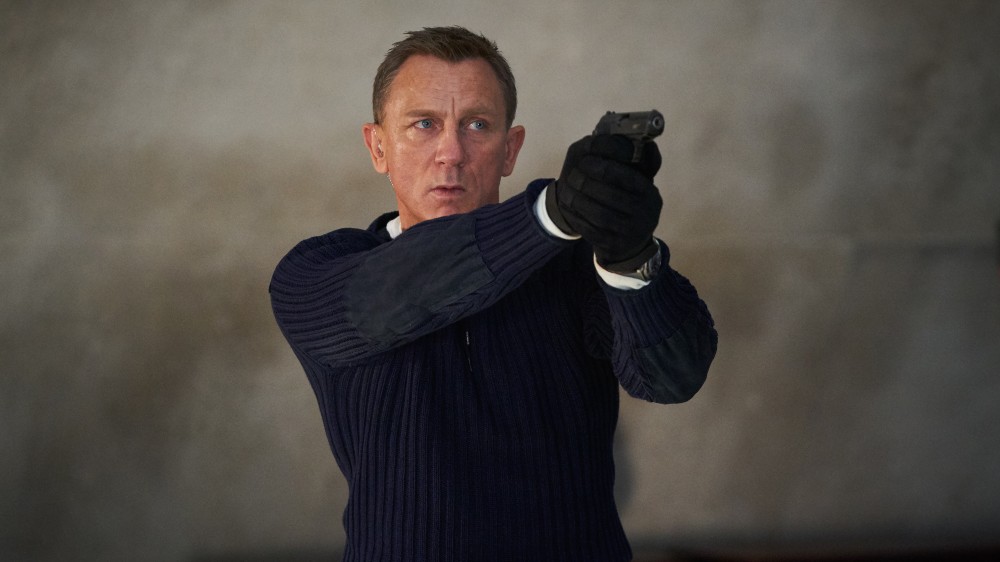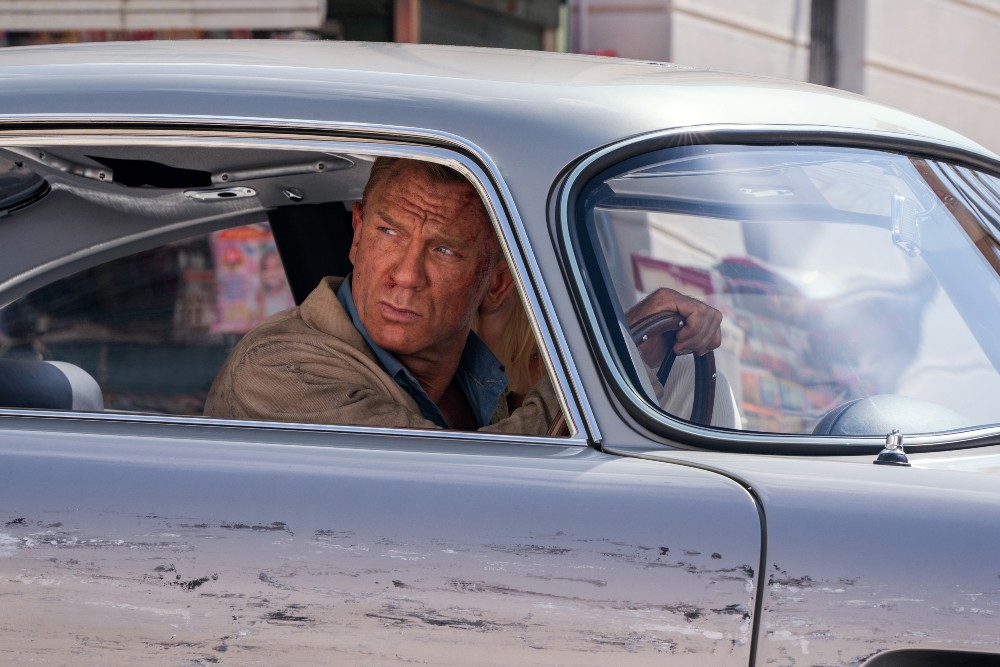
This will probably be Below the Line’s final bit of coverage for Daniel Craig’s last jaunt as James Bond 007 in No Time to Die, but as they say, we have saved the best for last.
Alexander Witt, ASC ACC has been the 2nd Unit Director and 2nd Unit DP for four of the five Daniel Craig Bonds and was there shooting most of the action scenes, starting with Casino Royale then skipping to Skyfall and performing that role ever since. This means that when you see Daniel Craig riding a motorcycle across the rooftops of Istanbul in Skyfall or you see the amazing opening of No Time To Die, which was shot with IMAX cameras, Witt is hugely involved with all aspects of how those scenes look.
What some might not realize about Witt is that he’s originally from Santiago, Chile, and still lives and works down there whenever he’s not traveling around the world doing 2nd Unit on some big action blockbuster or another. He’s also been working in camera since the late ‘70s and his involvement in action goes back well before The Bourne Identity, the pivotal 2001 film that changed the look of action movies over the past two decades.
Below the Line spoke with Mr. Witt a few weeks back, and besides talking about his work on No Time to Die and his four Bond movies, we also spoke about the state of the film industry in Chile, as well as the recent trilogy of topical films he’s directed down in Chile for Amazon, which may or may not get a U.S. release.
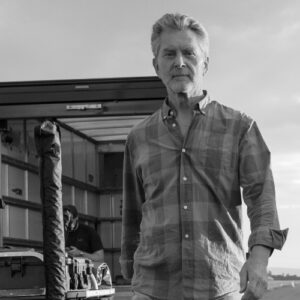
Below the Line: I’ve wanted to speak to you for a long time. You’ve been on my bucket list since I first saw your work on Casino Royale 16 years ago and saw you in action, although I didn’t actually see you on set until I went to Prince of Persia a few years later when I watched you direct 2nd Unit.
Witt: We’ve never met in person, then?
BTL: No, never met in person. Before prepping for this interview, I never even knew you were from Chile and that you were working in camera in the late ’70s and ’80s, doing television. I’m curious about your background and how you eventually got into doing 2nd Unit after doing lots of different roles in camera?
Witt: That was mainly because I started working with Jan de Bont, and I worked with him as an operator. Actually, on Cujo, I was his first assistant. I was operating for [Cinematographer] Tony Richmond, and the director got fired on the third day, and then the producer, Tony then told me, “Well, Jan de Bont is coming, and he’s operating himself.” I was living in the country without papers in those days, so he said, you can stay the 1st [assistant camera] as he left. I had no job, so I said, “Okay, I’ll take it.” And then, from then on, I started working for Jan as a Second Unit DP, and then on Speed, the first one, he gave me the opportunity to start directing the second unit. After that, I did Money Train, and then we did Twister, and then I don’t know what I did in between, but I did Speed 2 with him, and that was kind of my start in 2nd Unit. I was also directing commercials, and my background really came from being a camera assistant, and then I worked my way up.
BTL: Was 2nd Unit a fairly new thing in the ’90s? When did 2nd Unit become a thing? Was it always a film role, or was it something that became more common as movies got bigger with more action?
Witt: No, 2nd Unit has been big in action movies for a long time. Mickey Moore was one of the biggest 2nd Unit directors, and I met him before he died, but they’ve been around for a while.
BTL: I want to clarify something, because I’ve seen you listed as 2nd Unit Director but also as 2nd Unit Director of Photography. I was curious about that differentiation. I assume you must work with the film’s overall cinematographer, as well, or are you not working with that camera team while shooting 2nd Unit?
Witt: Most of the 2nd Unit directors come from stunts, and there are only I believe very few that came from photography. There’s a New Zealander, I’m trying to remember his name. (ED’s note: Possibly Geoff Murphy?) Because I was a DP myself, I normally do both — I direct and do the photography — and there’s only been three films where I had a cinematographer, and that was always Josh Bleibtreu, a very good cinematographer, and mainly, he works on 2nd Unit.
BTL: At what point are you brought in? The stunts are such a huge part of these movies. When does whoever is directing bring you in? Are you there for pre-production or are you brought on with the stunt coordinator and their team?
Witt: Normally, I start like two or three months before, we read the script and then we go and see the locations with the main director. At the beginning, it’s just a small group of maybe 10 people, and then we’ll go and see some of the locations that the director has chosen Or the scout says, “Okay, these are the two [locations] that we saw. Which one do you prefer?” Then we start talking about where we go, and then there’s a bigger group of like 30 people that includes a lot of the other heads of department. And then, we talk about what we’re gonna do in each location, and it’s all maybe two or three months before.
BTL: A location scout for a Bond movie must be pretty exciting, because you’re going to all these really glamorous locations in advance before you go there to work. What kind of things are you looking for on a location scout?
Witt: Sometimes, they describe something in the script, and then you go to the place. The location manager finds those places and normally gives you a choice of two or three, and then you go and see them. Like on Skyfall, the idea was to go to India, so we scouted in India twice. But every time we went back, the price was going up, and the time that we had at each place where we wanted to shoot was going down. “You can only be here for four hours, only in the morning for two,” and things like that. So we changed everything, the whole scene we changed to Istanbul. And we did the motorcycle chase in Istanbul on top of the roofs. It depends on the script, and like I said, it depends on the location, and the producers can say, “Well, we better find another location. This one is too expensive, and we don’t have the money,” and all that. It’s a variety of things that come together, and then of course the last word is the producer saying yes or no.
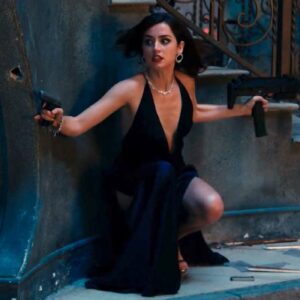
BTL: After you do the location scout, are you working with Lee Morrison [Stunt Coordinator] or Yves Girard [2nd unit Stunt Coordinator] in designing the shots for the stunts, and are you working with pre-vis as well? What are you doing to prepare?
Witt: It’s the same. I mean, we start with what the script is telling us, and then depending on the location, we come up with ideas. We talk with the director, and some directors like with Sam [Mendes], I went with the stunt coordinator, and we had an idea of how to do this. He said, “Well, it’s too big for me, make it smaller.” In the end, it’s really the director. On Skyfall, he felt that a thing that we were going to do, the chase in town, was a little too big for him, so we had to scale it down. And that’s what we ended up with on Skyfall.
BTL: Do you work with models or computers to figure out the stunts and the shots beforehand or is it mostly doing it on set when you have the stunt performers and actors there?
Witt: Most of the time they have storyboards, so that everybody knows what they’re gonna do and what they need to do the stunts, and all that. We have storyboards, and sometimes it’s animation that the visual effects department does from the storyboards, and it looks like an animated film of what we’re gonna do. This way, all the departments are involved, they know what they need. Let’s say like costumes. They’re gonna need more costumes for the stunt doubles, so each department has an idea of what they need.
BTL: Are you communicating with Linus, the main unit DP as well, just for consistency? Obviously, some of your shots will be cut into other shots, so how do you coordinate to keep things consistent?
Witt: For me, it’s like I’m an extension of the director and the DP in that sense when I do that. I have meetings with the director on how he is looking to see the movie, what kind of shots he likes, and then I have a meeting with the director of photography to see how he’s gonna shoot the film and the lighting, because a lot of times we’re totally separate from the first unit, so I have to match what he does. So when it comes to the editing, there’s no difference between first unit and second unit. There’s always meetings with both of them.
BTL: With that in mind, were you shooting with IMAX cameras as well? I did get to see it in IMAX, and it looks stunning, so is 2nd Unit using those cameras as well?
Witt: Yes, we did, because all of Matera [in Italy] and some of the Norwegian scenes were shot in IMAX. In Matera, there was a lot of action with the cars and all that, it was a mixture of IMAX and 35, because, in some places, we couldn’t place an IMAX camera inside cars in some of the shots. It’s mostly IMAX, but there are also some shots that we need to put smaller cameras, so we use certain 35 ARI cameras to do that.
BTL: Was this the first time you shot with IMAX cameras, or have done so on other movies, as well?
Witt: For me, it was the first time to use IMAX cameras. We were going to use them on Spectre, and then we decided that it would take too long to send to post and get dailies back, so we decided not to do it, and for the night shots, we used the ARRI 65 Digital.
BTL: Does your 2nd Unit ever end up shooting other things that aren’t at all action-related?
Witt: I mean, we do other stuff. We do plates sometimes. If the 1st Unit has a 120-day shoot, usually we have 60-70 days, then in between, we can do plates. Sometimes, they don’t finish a scene and they leave things behind, or an explosion that was supposed to happen with the 1st Unit, we do that, too. Whenever there’s something that they leave behind, we can clean it up. It’s not just the action that we’re involved with. A lot of times, some of the actors are not working with 1st Unit, then — depending on the director, also — like [Casino Royale director] Martin Campbell, he said, “Take Daniel, he’s not doing anything.” So they sent in the first team to shoot with us.
BTL: Are you usually working mainly with Lee or Yves as the stunt coordinator? Who are you working with while shooting?
Witt: With Lee, that’s his first time. He used to work for Gary Powell — he was like his right-hand man — and Lee started to be a stunt coordinator a few years ago. Many of them, they want to be directors of 2nd Unit, and I’m sure, in the next year or two, he’ll be doing that, too. But he is a stunt coordinator, and this was the first film. I’ve known him for many years when he was working for Gary Powell.
BTL: Obviously, Daniel has experience now doing action and riding motorcycles, driving cars, etc, but how about working with newer actors like Ana de Armas and Lashana Lynch? They obviously are trained for the action scenes, but do you have to work with them to know where the cameras are while they’re performing?
Witt: We prepare them also, like if they didn’t know how to drive a motorcycle, they get classes with stunts. They’re being prepared for that. It depends on how dangerous it is. In that case, we put a stunt double. There are ways to put an actor on a motorcycle, and you can put the motorcycle on a trailer, and it looks like he’s driving himself. It depends on how fast the bike has to go, and then you’ll probably put a stunt double, and then either you do face replacement later or just do a close up with him on a trailer. You normally prepare them so they have an idea if they’ve never been on a motorcycle and the same with cars and the same with anything they have to do in action, we try to [make sure] they have an idea what’s going on.
BTL: I was thinking more with the physical action, the fight scenes, where you have to get closer with the camera. Is that the same concept, where you do a lot with the stunt performers?
Witt: No, you also teach the actors to fight, as much as you can, and then if it’s safe and you’re comfortable, they’ll do it. Or if they don’t, they’ll say they want a stunt person, and a lot of times, you use one actor and then the other actor can be a stunt double, and then you shoot one angle like, so at least one of them knows how to fight well, and that helps the other actor, too. And then, when you do the reverse, you have a double for the other actor and you have the real actor. In some wide shots, you use both doubles, and then in the cut, you try to see what looks best. Normally, you try to find stunt doubles that look fairly close to the main actor.
BTL: Are you involved in post at all, in terms of the editing or coloring? Are you able to step in and offer some thoughts of which shots look good or are you done once the camera stops?
Witt: No, it depends on the editor. Some editors, they don’t call, and some say, “Alexander, can you come over and explain to me what shots you think I should use?” It depends on the editor. I always ask them if they want me there or if need anything to let me know. Some do, and some don’t.
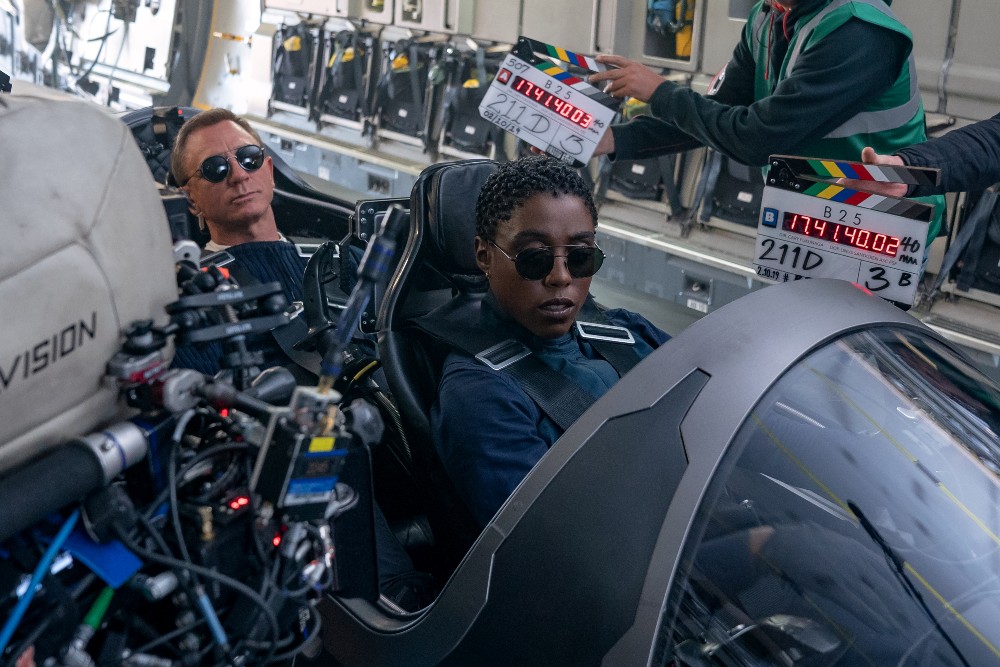
BTL: Has your role changed a lot over the course of the four Bond movies and working with three different directors?
Witt: I think it’s the same. I mean, in that sense, [Producers] Barbara [Broccoli] and Michael [Wilson] are very easygoing in a way that they tried to involve you as early as possible, so that things go smooth, because if you come in too late and you’re not prepared, then everybody else doesn’t know what they’re doing or what they have to do. So in that sense, I think it’s been for me very easy in that sense that we have enough time to prepare and see the location and come up with new ideas. And then, of course, we have to present those to the main director and see if he likes them or wants changes.
BTL: Have you been working since the pandemic began? Are you still doing stuff?
Witt: No, last year, I didn’t do anything, and then, I did something in March for Apple, which was in Spain. It’s a new series. It’s coming out called Foundation, and then I started directing this trilogy for Amazon here in Chile.
BTL: So, you are directing again? I was curious about that, because I remember you directed a Resident Evil movie, but I wasn’t sure if you were still directing regularly.
Witt: I’m still interested in that. I’ve been involved in six other projects that, unfortunately, went down, but now, that’s really what I would like to finish doing is directing instead of doing 2nd Unit.
BTL: How’s the film industry in Chile doing these days? Has it been hurt a lot by COVID?
Witt: If it wasn’t for Amazon and Netflix coming here and doing movies, it’s really an “author” industry. I mean, the writer is the director mostly, and they’re small-budget movies. I mean, they’re very unknown, even if they won an Oscar two years ago for Best Foreign Film (A Fantastic Woman). It’s a very small industry, in that sense, and especially with action. They’re not very experienced with action here. From what I hear from people that I’m working with at the moment is that I’ve been changing a lot of things here in the industry. They don’t think big, in that sense, and that’s why they don’t do a lot of action, and it’s more art films.
Chile has everything that you need, all the locations, from desert to high mountain snow, all in the same country. Unfortunately, what they don’t have here is an incentive, and if they had incentives, I think more people would come and shoot here. And that’s a big deal for most production companies. In a way, it’s with any company. That’s why they go to China or to other countries, because they get incentives. Not only the film industry, but any industry. So they would rather go to another country where they can produce cheaper. That would be the same here with the film, if they would implement some incentives.
BTL: I remember Eli Roth had a period where he was trying to make a lot of movies down there, but when he started bigger studio movies, they probably were looking for those incentives.
Witt: That’s the other problem here is that they don’t have big studios. Mostly the big studios are used by TV, and they use them all the time, so they can’t take them over for a month or two months, and that’s what’s missing here, too. I know that, as far as I remember, when we were doing Skyfall, there was a team from Chile that went to talk to Pinewood Studios with the idea of opening a studio or for Pinewood to build something there. I don’t know what happened, but it never came to life, and I don’t know if the Chileans were too hard. It’s a stable country in that sense, and the labor is cheap, but incentives anywhere in the world is what any production company is looking for.
BTL: Hopefully, we can talk again for something you direct, maybe for this new series you’re doing for Amazon.
Witt: Yeah, it’s for Amazon, and it should air… I mean, we finished the third one in the beginning of February. I don’t know how they deal with their schedule — if they put all three films at the same time or one a week. I don’t know when. They haven’t said anything to me or to the production when they want to air the three films.
BTL: So it’s actually three feature-length films?
Witt: Yeah, they’re three feature-length. It’s the same character. It’s a bit like Tomb Raider with the same characters going on. The themes are a little bit in a way political, because it deals with the Indians in the South and deals with the mining in the North. They’re taking a lot of the water and drying out a lot of the water sources here. It’s the same with the avocado plant near Santiago. They use so much water for avocados, and a lot of communities are using the water, so it’s a little bit political in that sense, too.
No Time to Die is still playing in theaters across the globe.
All pictures courtesy MGM Pictures and EON Productions.

